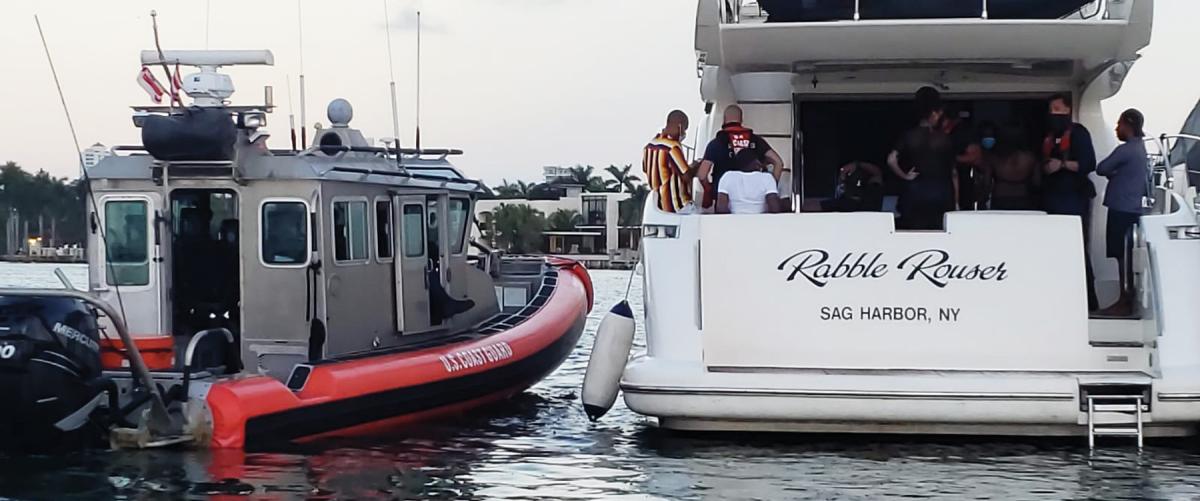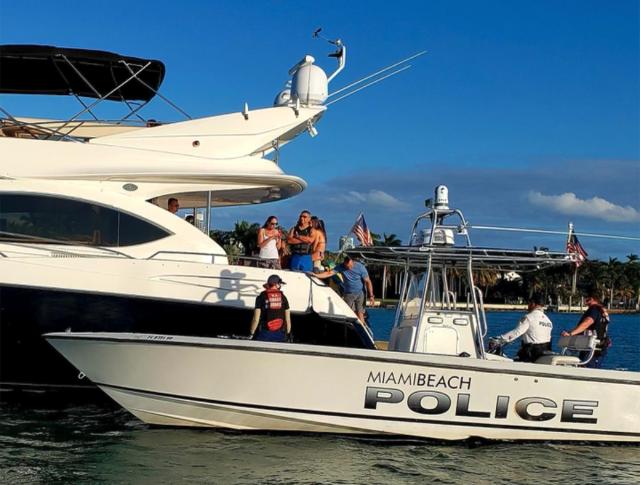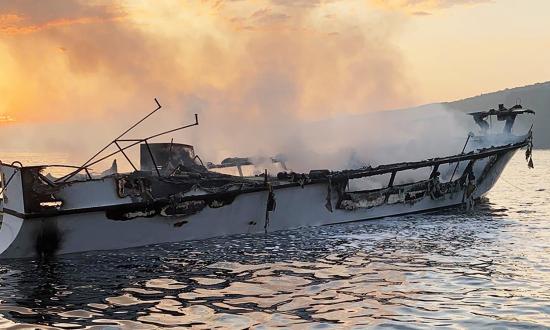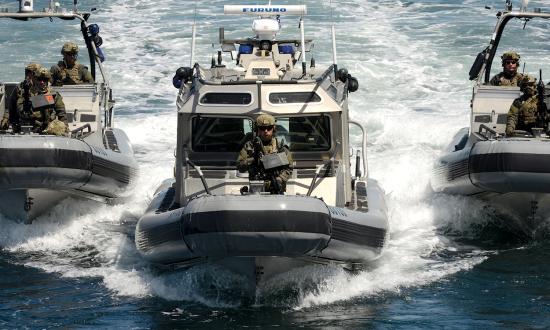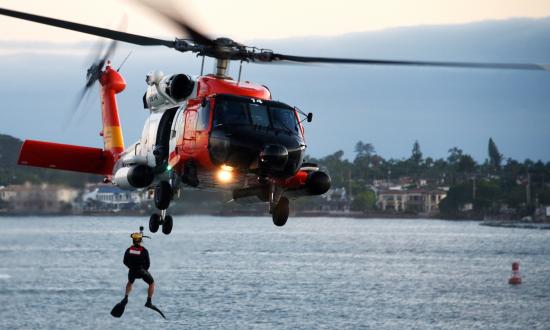In Miami, pleasure cruises have been a popular tourist activity for many years. The COVID-19 pandemic only increased the amount of activity on the water near Miami as gyms, clubs, restaurants, and other social establishments reduced capacity or closed altogether. The sheer volume of vessel traffic presents a safety concern that is compounded when unsafe mariners and intoxicated passengers are involved. From 2020 to early 2021, U.S. Coast Guard Sector Miami saw an almost 100 percent increase in illegal charter terminations.
This drastic increase in illegal charter terminations may not be entirely attributable to increased vessel traffic, as Sector Miami began increased enforcement against illegal charters several years prior to COVID-19, including several successful prosecutions of Captain of the Port Order (COTP) violations and Seaman’s Manslaughter Statute deaths in Miami in 2018 and 2019.1 However, the risk to passenger safety became too great to ignore with the increase in illegal charter operations on Miami’s waters over the past several years. Coast Guard units, law enforcement agencies, and community leaders in Miami had to develop creative ways to address the problem.
The 1993 Passenger Vessel Safety Act (PVSA) governs vessels operating with passengers for hire.2 While the PVSA generally requires vessels with passengers for hire have a Coast Guard–issued certificate of inspection that are deemed small passenger vessels if less than 100 gross tons, uninspected passenger vessels (UPVs) are an exception. UPVs are commercial operations that allow credentialed mariners to carry 6 or 12 passengers, depending on the vessel’s tonnage and whether the crew meets specific credentialing and drug-testing requirements and the vessel has required safety equipment. Aside from inspected vessels or those operating as UPVs, there is one other way a vessel can operate with passengers—the so-called bareboat charter, which, if done legally, is considered a recreational voyage. A valid bareboat charter requires the complete transfer of temporary ownership of a vessel to a charterer, who must have a choice of crew. The overwhelming majority of Sector Miami’s illegal charters relate to charter vessels that fail to meet all the necessary bareboat charter requirements.
Sadly, there have been passenger deaths associated with illegal charters in Miami.3 The initial response and preliminary investigation into a charter-related fatality are extremely important, as a death involving a commercial vessel operation will bring the actions of the concerned mariner, crew, and vessel owner under the scrutiny of the Seaman’s Manslaughter Statute.4 This statute is a powerful deterrent against negligence or misconduct that might result in death, as it provides a lower legal bar to surmount than the common law manslaughter statute. The latter requires the Department of Justice to show “gross negligence or heat of passion in the absence of malice.”5 Instead, the Seaman’s Manslaughter Statute criminalizes simple negligence, with the courts consistently holding that “any degree of negligence is sufficient to meet the culpability threshold.” Those convicted of violating the Seaman’s Manslaughter Statute can be sentenced to as many as ten years in prison.6
Dynamic Targeting
Coast Guard Publication 2-0, Intelligence, incorporates the traditional intelligence cycle to support Coast Guard operations.7 While the Coast Guard’s intelligence cycle serves long-term strategic and operational intelligence needs well, it tends to move slower than the pace of many tactical sector objectives, such as tracking illegal charters. Intelligence must move at the speed of crime. Combating illegal charter operations in Miami proved to be an arduous task, with the need to synergize targeting, detection, criminal prosecutions, civil penalties, education, and prevention to reduce the number of illegal charters on the water and enhance passenger safety.
In the fast pace of war in the counterinsurgencies in Iraq and Afghanistan, U.S. special operations forces developed an “alternative intelligence cycle.”8 Initially called “Find, Fix, Finish,” the cycle would expand to “Find, Fix, Track, Target, Engage, Assess.”9 Sector Miami began using aspects of the expanded cycle to identify, track, and prosecute illegal charters. This gave Coast Guard units a tactical advantage to react and respond quickly to illegal charters.
Find. The sector develops awareness about where the charters originate (marinas, etc.), what vessels operate as bareboat charters, where the vessels tend to go with passengers, and who are the captains and brokers. This basic information gives boarding officers, commanders, and operations and intelligence staff invaluable data about where and when to send patrols and what vessels to board. The find phase also entails tracking all available information on illegal charters from partner law enforcement agencies, community partners, and vetted open-source internet research. Partnership with local, county, and state marine patrol units increased maritime domain awareness for this phase.
Track. Tracking suspected illegal charters ensures boardings are conducted at the right place and time. Boarding suspected illegal charter vessels when they are in transit with no passengers is a wasted opportunity. Many illegal charters will change their pickup and drop-off locations to avoid detection. Local law enforcement partners assisted in tracking vessel movements.
Act. The boarding process is the most critical phase of the cycle. Coast Guard boarding officers must identify charters and determine if they are operating legally or illegally under challenging conditions, often armed with little to no information about the vessel. For an investigation to succeed, boarding officers must be experts on the applicable charter regulations and have as much information as possible about a suspected illegal charter before the boarding.
Exploit. Every charter boarding or interaction with the charterer, vessel owner, broker, or captain is an opportunity to gather new information about illegal charters. Charter brokers, marina managers, and vessel owners use creative and deceptive tactics to circumvent PVSA requirements. The intelligence collected during boardings can drive operations toward new targets. It is not uncommon for Sector Miami units and law enforcement partners to board a vessel as a follow-on target based on information developed from a previous boarding, sometimes on the same day.
Analyze. Dynamic targeting cycle analysis comes in two forms: tactical and operational. Tactical analysis uses available information, resources, and sensors when time is of the essence. It includes researching available law enforcement information, social media, and public records about a vessel’s ownership and operation. Operational analysis is focused on long-term operations to put the clues together on illegal charters that attempt to avoid detection and impede boardings. Operational analysis is continually conducted by the sector intelligence staff, marine investigators, and Coast Guard Investigative Service (CGIS) special agents. In the future, data scientists and geospatial specialists may use operational analysis to predict future illegal charters.
Disseminate. Actionable information is useless if it is not disseminated to the right enablers. Fragmented information not actionable one minute can become targetable in the next when fused with new data. New information can be rapidly disseminated through reports, emails, phone calls, and task force meetings, among other avenues. Information from one illegal charter boarding can often drive follow-on operations, as many illegal charters operate with networks of owners, captains, crew, and brokers. Processing this information in the dynamic targeting cycle allows the Coast Guard and partner law enforcement units to react more quickly when new illegal charter targets are identified.
Educate. The goal of illegal charter enforcement operations is passenger safety. Deterring noncompliant behavior with civil penalties and the possibility of arrest is much more effective if the public is aware it is occurring. Coast Guard District 7 public affairs staff and the Sector Miami education and outreach coordinator play a vital role in educating the public about enforcement efforts. Beyond deterrence, education helps charter operators who want to operate legally and simply need more information to bring their operations into compliance. Every interaction
with vessel owners, passengers, and captains allows Coast Guard personnel to promote legal and safe charter operations and make the public aware of Sector Miami’s passenger-for-hire seminars, which cover all aspects of bareboat charters.
Prosecute. All the good work a boarding team does on an illegal charter is futile if the casework is not properly documented with sufficient evidence to ensure Coast Guard hearing officers are able to swiftly assess civil monetary penalties. Also, in the event a vessel owner continues to operate illegally in defiance of a COTP order, proper documentation and education of the vessel owner or master will be critical in a subsequent CGIS criminal investigation. Willful violations of a COTP order are a Class D federal felony, punishable by up to six years in prison and $500,000 in criminal penalties.10
The Coast Guard should continue to refine and develop dynamic targeting methodologies to address the ever-changing safety and law enforcement concerns in the maritime domain. Dynamic targeting more effectively connects the intelligence, operational, and education aspects of Coast Guard operations and may have application to other service missions as well. The Coast Guard and Miami law enforcement partners remain ready to ensure the safe and legal operation of charter vessels.
1. See U.S. v. Maurico Alvarez, No. 18-15084 (11th Cir. 2020); U.S. v. Allan Ladd, No. 1:19-CR-20315 (S.D.F.L., 2019); and U.S. v. Randy Postma, No. 1:18-CR-20815 (S.D.F.L., 2018).
2. 46 U.S. Code § 55103, “Transportation of Passengers."
3. U.S. v. Maurico Alvarez; U.S. v. Allan Ladd; and U.S. v Randy Postma.
4. 18 U.S. Code § 1115, “Misconduct or Neglect of Ship Officers."
5. United States v. O’Keefe, 426 F.3d at 278 (19 September 2005); See 18 U.S. Code § 1112, “Manslaughter."
6. United States v. O’Keefe.
7. Coast Guard Publication 2-0, Intelligence (Washington, DC: 2010).
8. Army Techniques Publication 3-60, The Targeting Process (May 2015).
9. Department of Defense Joint Targeting School, Student Guide (2017).
10. 46 U.S. Code § 70036, “Ports and Waterways Safety."




